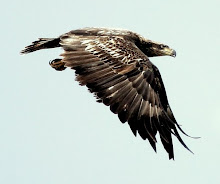Monday, April 27, 2009; 3:03 AM
BETHLEHEM, West Bank -- Muslim calligrapher Yasser Abu Saymeh has dedicated the past two months to Christian art, writing the Gospel of Luke in ornate Arabic script to be presented to Pope Benedict XVI when the Roman Catholic leader visits the Holy Land next month.
Abu Saymeh never read a New Testament text before he was picked for the prestigious assignment by Bethlehem's Christian mayor. He said he has since come to appreciate the shared strands of the two faiths.
"I found that many of the things emphasized in Christianity exist in our religion," said the 51-year-old Abu Saymeh.
The artist has nearly completed the Gospel's text, which will eventually cover 65 poster-sized pages. It will be accompanied by colored drawings depicting the life of Christ, from the Nativity to the crucifixion.
The pope will receive the gift on May 13, when he visits Bethlehem as part of a pilgrimage that also includes stops in Nazareth and Jerusalem, the other focal points in the life of Jesus.
During a May 11 reception at the residence of Israel's president, Shimon Peres, the pope will receive another rare gift of Scripture _ a 300,000-word Hebrew text of the Jewish Bible inscribed on a silicon particle the size of a grain of sand, using nanotechnology.
Calligraphy is prized in Islamic cultures because Islam frowns upon figurative art as idolatrous.
Abu Saymeh was trained in Baghdad and works in a small studio in Bethlehem, a few hundred yards (meters) from the Church of the Nativity, built over Jesus' traditional birth grotto.
He opens his workshop early every day, right after dawn prayers at a mosque near his home. The walls are decorated with handwritten verses from the Quran and Arabic poetry. Writing tools are laid out on an old table, including two dozen calligraphy pens and black, green and red ink.
Every few days, a local priest checks completed pages for accuracy. The text and drawings will be bound in deer hide and presented in a mother-of-pearl box, a specialty of Bethlehem artisans.
When it came to choosing a calligrapher for the project, the choice quickly fell on Abu Saymeh. He had won distinction in 2007, when he presented a handwritten copy of the Quran to Palestinian President Mahmoud Abbas for the Muslim holy month of Ramadan.
He also teaches calligraphy at a local university, and is sometimes asked to testify in court as a handwriting expert, usually in fraud cases. Raised in a Palestinian refugee camp in Jordan, he began his career by drawing signs for what he said were peaceful demonstrations against Israel's military occupation.
Mayor Victor Batarseh said he chose Luke among the four Gospels because he felt his writing contains the most detail about Jesus' time in the city. And he picked Abu Saymeh not just because of his talent, but to send a message of peaceful religious coexistence.
"It's a message to the world that Bethlehem is the city where Christianity was born," he said. "It's also the place of brotherly relations between Muslims and Christians."
Relations between Christians and Muslims in Bethlehem are generally good, though there is occasional friction, usually involving either land disputes or mixed couples breaking the taboo of marrying someone from another religion.
Muslims make up two-thirds of the population in the town of 30,000 and Christian influence has been receding steadily.
The issue of interfaith relations will be high on the pontiff's agenda during his May 8-15 tour, which includes several meetings with Muslim leaders.
Among many Muslims here resentment is still festering from 2006, when Benedict linked Islam and violence. The pope quoted a Medieval text that characterized some of the teachings of Muhammad as "evil and inhuman," particularly "his command to spread by the sword the faith."
Benedict long ago expressed regret for any offense his words might have caused, but his comments on the upcoming trip will be watched closely by Muslims and Chrisians in the Palestinian territories. Any misstep could upset the delicate relations between the Muslim majority and a dwindling Christian minority.
The calligrapher said he took on the mission, in part, because he wanted to send a conciliatory message and distance himself from extremists.
"I would like this to be a message from a Muslim artist through this simple work that the Muslim artist is tolerant and not aggressive, despite abuses that may come from here and there from extremists who use our religion for their own interests," he said.

No comments:
Post a Comment